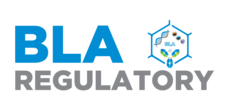The landscape of pharmaceutical drug pricing is experiencing a gigantic shift in 2025, with groundbreaking reforms in the US and EU reshaping how drugs are priced, negotiated, and accessed globally. As governments tighten their grip on pricing transparency and leverage, industry players face an evolving maze of strategic challenges and opportunities. This edition explores the key reforms in the US and EU, their impact on market strategies, and strategic implications for foreign sponsors and manufacturers to adapt and thrive in this new era.
Drug Pricing Reforms in the U.S. and EU: What’s Changing?
October 15, 2025
US Focus: The Most-Favored Nation (MFN) Executive Order and Negotiation Power
The US government integrates trade and tariff leverage with pricing reforms, fundamentally reshaping global pricing strategies:
- Medicare Drug Price Negotiation: Centers for Medicare & Medicaid Services (CMS) now directly negotiates prices for high-expenditure Medicare drugs, with initial negotiations covering 10 major drugs and generating $1.8 billion in projected savings.
- Most-Favored Nation (MFN) Pricing: Executive orders mandate that US prices align with lowest prices paid in a basket of comparable OECD nations (a group of 38 developed countries committed to economic cooperation and high standards of market regulation), potentially reducing costs by up to 90% for certain products.
- State-Level Price Controls: States like Colorado have established Prescription Drug Affordability Boards with authority to set upper payment limit
Real-World Pricing Examples
• Under the October 2025 agreement, AstraZeneca’s COPD inhalers, Bevespi Aerosphere and Breztri Aerosphere, will be offered at discounts ranging from 96% to 99% through the US government’s direct-to-consumer program, according to the White House fact sheet. AstraZeneca has also committed $50 billion to US manufacturing and research by 2030 to support this initiative.
• Amgen’s biologic, Enbrel (etanercept), used to treat rheumatoid arthritis and other autoimmune diseases, is part of the company’s landmark agreement with the US government to reduce prices by as much as 67% for Medicare patients, with additional discounts available through direct-to-patient channels.
EU Focus: Value-Based Pricing and Cross-Country Coordination
The EU is strengthening collective negotiating power through structural changes:
- Joint Price Negotiations: Initiatives like BeNeLuxA (Belgium, Netherlands, Luxembourg, Austria, Ireland) enable countries to negotiate collectively, increasing payer leverage and creating reference pricing cascades.
- Enhanced Price Transparency: New requirements mandate disclosure of net prices and rebate structures, affecting confidential pricing strategies globally.
- Accelerated Generic Entry: Expanded Bolar exemptions allow generics to prepare market entry during patent protection, shortening effective monopoly periods.
Case Study: Joint Negotiation Impact — BeNeLuxA Initiative
In July 2018, the BeNeLuxA collaboration between Belgium and the Netherlands finalized a joint price negotiation for Spinraza (nusinersen), a gene therapy used to treat spinal muscular atrophy (SMA), a rare and severe neuromuscular disease.
Key Outcomes:
• Both countries secured favorable reimbursement terms following a joint Health Technology Assessment (HTA).
• Negotiation leveraged combined patient populations to strengthen bargaining power against the manufacturer.
Strategic Implications:
• Collaborative Leverage: Pooling resources and data can yield more advantageous pricing for rare-disease treatments.
• Blueprint for Expansion: Inspired similar multi-country initiatives in Europe, such as the Beneluxa+ group, though direct price-setting impacts beyond Belgium and the Netherlands remain undocumented.
• Evidence Generation: Joint HTA assessments produced robust real-world evidence to support sustainable access and reimbursement.
Comparative Overview: U.S. vs. EU Pricing Regimes
|
Domain |
United States |
European Union |
|
Core Policy Lever |
MFN pricing, tariffs, negotiated concessions |
HTA, price negotiation, external reference pricing (ERP) |
|
Legislative Change |
Executive orders and negotiation-based enforcement |
National laws, reimbursement rules, multi-country collaboration |
|
Scope & Uniformity |
National, applying to Medicaid and potentially commercial payers |
Fragmented; country-by-country differences and reimbursement bodies |
|
Transparency Pressure |
Demand for rebate & price disclosure |
Gradual push; confidentiality more entrenched |
|
Cross-border Spillover |
Pushes to raise foreign prices to protect US margins |
Payers reluctant to cede pricing control; risk sharing of cost |
|
Risk to Foreign Sponsors |
Must negotiate US deals or face tariffs; may need global repricing |
Must defend pricing in multiple markets; complex negotiation burden |
Strategic Implications for Foreign Sponsors & Manufacturers
- Global Net Revenue Pressure – S. pricing reforms, including Medicare negotiations and MFN pricing, are likely to compress net margins. Manufacturers may consider adjusting ex-U.S. pricing, though this could trigger resistance from international payers or governments reluctant to absorb increases.
- Regulatory and Trade Leverage – The U.S. is increasingly using tariffs and regulatory tools to secure price concessions. Companies must factor in trade dynamics and engage early with agencies like CMS and HHS to navigate evolving requirements.
- Launch Sequencing & Market Prioritization – Launching in lower-price markets first can negatively impact global reference pricing. Strategic sequencing and careful country prioritization are essential to protect pricing benchmarks.
- Transparency and Discount Strategies – Growing demands for rebate and net price transparency—especially in the U.S. and EU—may limit the effectiveness of confidential discounting. Manufacturers should reassess their global rebate structures.
- Evidence-Driven Negotiations: Payers are demanding robust real-world evidence, outcomes-based pricing, and risk-sharing models. Strengthening health economics and outcomes research (HEOR) capabilities is critical.
- Local Manufacturing Commitments:S. policy increasingly favors domestic production. Foreign manufacturers may need to invest in U.S.-based facilities to enhance negotiation leverage and secure market access.
- Legal and Policy Monitoring: Ongoing legal challenges to U.S. executive orders and evolving EU regulations require close monitoring. Staying ahead of policy shifts is vital for compliance and strategic agility.
Closing Thoughts
While these reforms present notable hurdles—such as increased transparency demands and complex negotiation terrains—they also carve pathways for innovation in value-based care and collaboration. Forward-looking manufacturers that embrace transparency, align strategies with emerging policies, and invest in outcome-driven models will likely turn compliance challenges into competitive advantages. Staying agile and informed will be key to navigating this transformative period and securing sustainable growth globally.
References
- Delivering Most-Favored-Nation Prescription Drug Pricing to American Patients (White House, May 11 2025)
- Selected Drugs and Negotiated Prices (CMS, May 22 2025)
- FAQs about the Inflation Reduction Act’s Medicare Drug Price Negotiation Program (Kaiser Family Foundation, August 8 2025)
- Trump, AstraZeneca announce US drug pricing deal at White House (Reuters, October 10 2025)
- CMS Releases Final Guidance for the Medicare Drug Price Negotiation Program for 2028 (CMS, October 5 2025)
- Negotiated Prices Take Effect for Ten Drugs in 2026 (Medicare Rights Center, October 8 2025)
- Reform of the EU Pharmaceutical Legislation (European Commission, September 21 2025)
- EU Pharma Reform 2025: Key Changes & Market Impact (Remap Consulting, June 8 2025)
- US court rejects Novo Nordisk’s challenge to Medicare drug pricing plan (Reuters, October 6 2025)
- The Beneluxa Initiative (Beneluxa, January 23 2024)
- TrumpRx Website for Drug Discounts Is Part of Pfizer Deal (NPR, September 30 2025)

